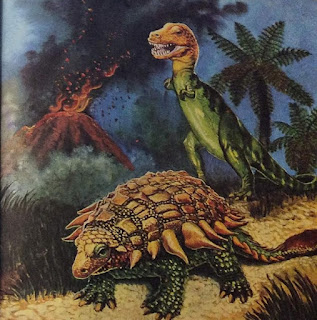Recently, I decided to fill a gap in my cyberpunk awareness and check out Walter Jon Williams' Hardwired (1986). I've sampled Williams' short fiction before: his contributions to the Wild Cards shared universe, "Wall, Stone, Craft" from my years subscribing to the Magazine of Science Fiction and Fantasy; and "Red Elvis" and "Prayers in the Wind," stories that left an impression even among other worthies in Dozois' Years Best Science Fiction collections. I figured I was long overdue to read what is perhaps his most famous novel.
In the near future of Hardwired, the Earth has lost the Rock War (a kinetic orbital strike) with the Orbital stations in the control of various corporate blocs. The territory that was formerly the United States has fractured into the rival states, scrambling to hold onto what they can in the face of environmental degradation and exploitation by the Orbital blocs. The novel has two protagonists. One is Cowboy, a cybernetically enhanced ex-pilot, now a panzer (a hovercraft or ground-effect type vehicle; storywise a futuristic truck) driver, running contraband from the relatively more prosperous West to the beleaguered East Coast. The other is Sarah, an enhanced street tough and bodyguard in Florida, trying to keep herself and her prostitute brother alive after she becomes a "loose end" following a job she took for a corporation.
Hardwired seems clearly post-Gibson, but Williams crafts a cyberpunk future all his own. No Blade Runner-inspired Sprawl here really or heavy Japanese overlay. Hardwired sets much of its action in rural areas, even more rural in his future than today, on lonely, roads, or in smaller cities like a partially drowned Tampa that becomes an evocation of the developing world under the colonial boot heel.
William's Cowboy has a much more on-the-nose name than Gibson's console cowboys. The callbacks and parallels to the Old West of reality and of celluloid myth are much stronger. Hack science fiction of the past was often derided for utilizing plots cribbed from horse operas and given a futuristic veneer, but William's work recalls the Western in a way that gives it resonance similarly to how the work of Leigh Brackett so often does. In fact, Cowboy reminds me more than a little of Brackett's outlaw protagonist in "The Citadel of Lost Ships," even down to their "the family lost their land" backstory.
Beyond the Western, the run down and discarded nature of Hardwired's America has a very 70s feel. There are echoes of car movies like Vanishing Point, but also 70s Neo-Noir. It prefigures Cowboy Bebop a bit in some of its worldbuilding and influences.
I enjoyed the novel a lot. It's fairly pulpy, I suppose, though that's never been a downside to me. It is very 80s, too, in how it is written. It's prose in interesting enough and quintessential early cyberpunk: Chandlerian simile and metaphor with a science and technology obsession. The occasional snippets of news or ad copy go for black satire at times similar to Robocop, still a year away. It's themes, though, are just as relevant, today, perhaps even more so.








































